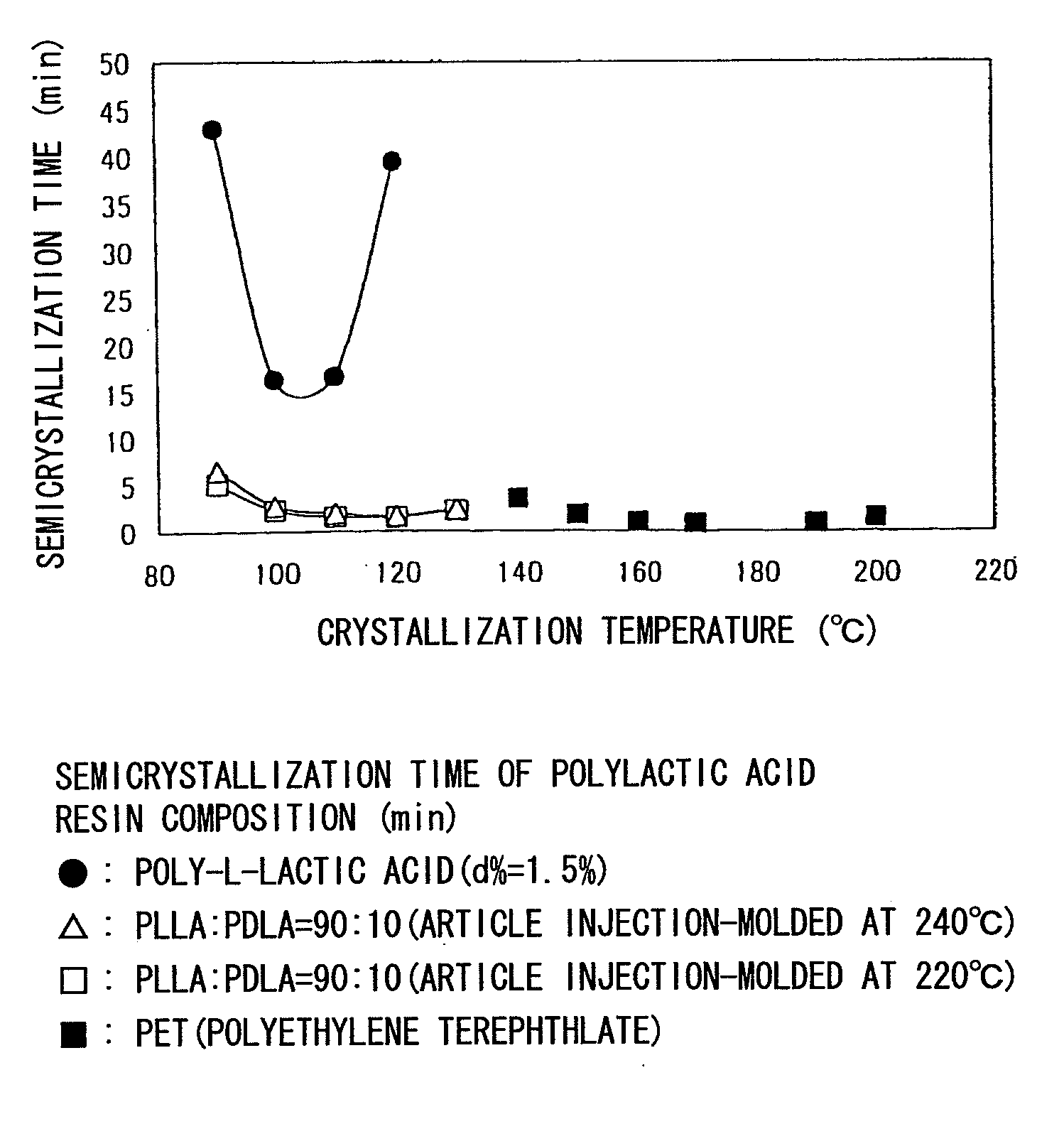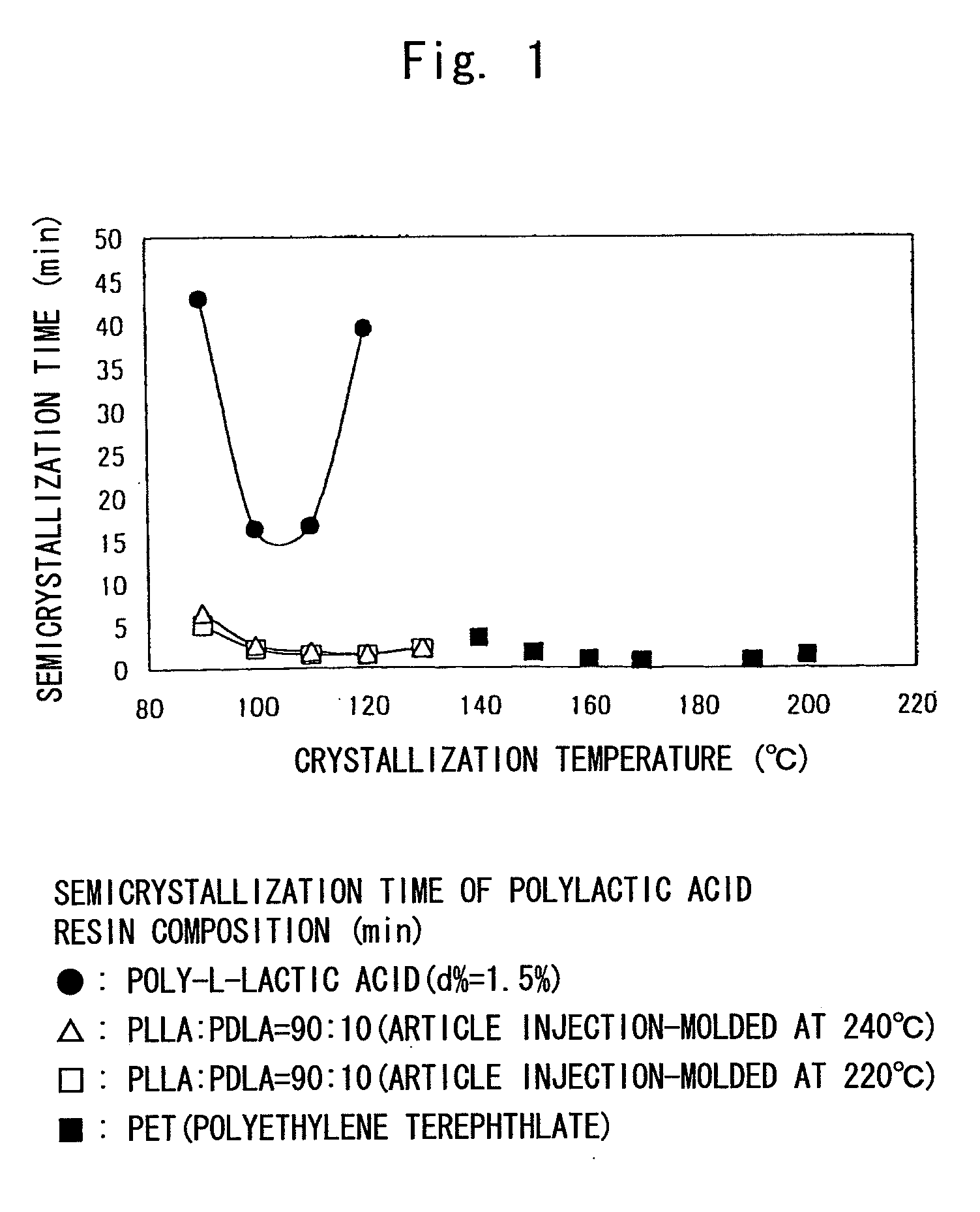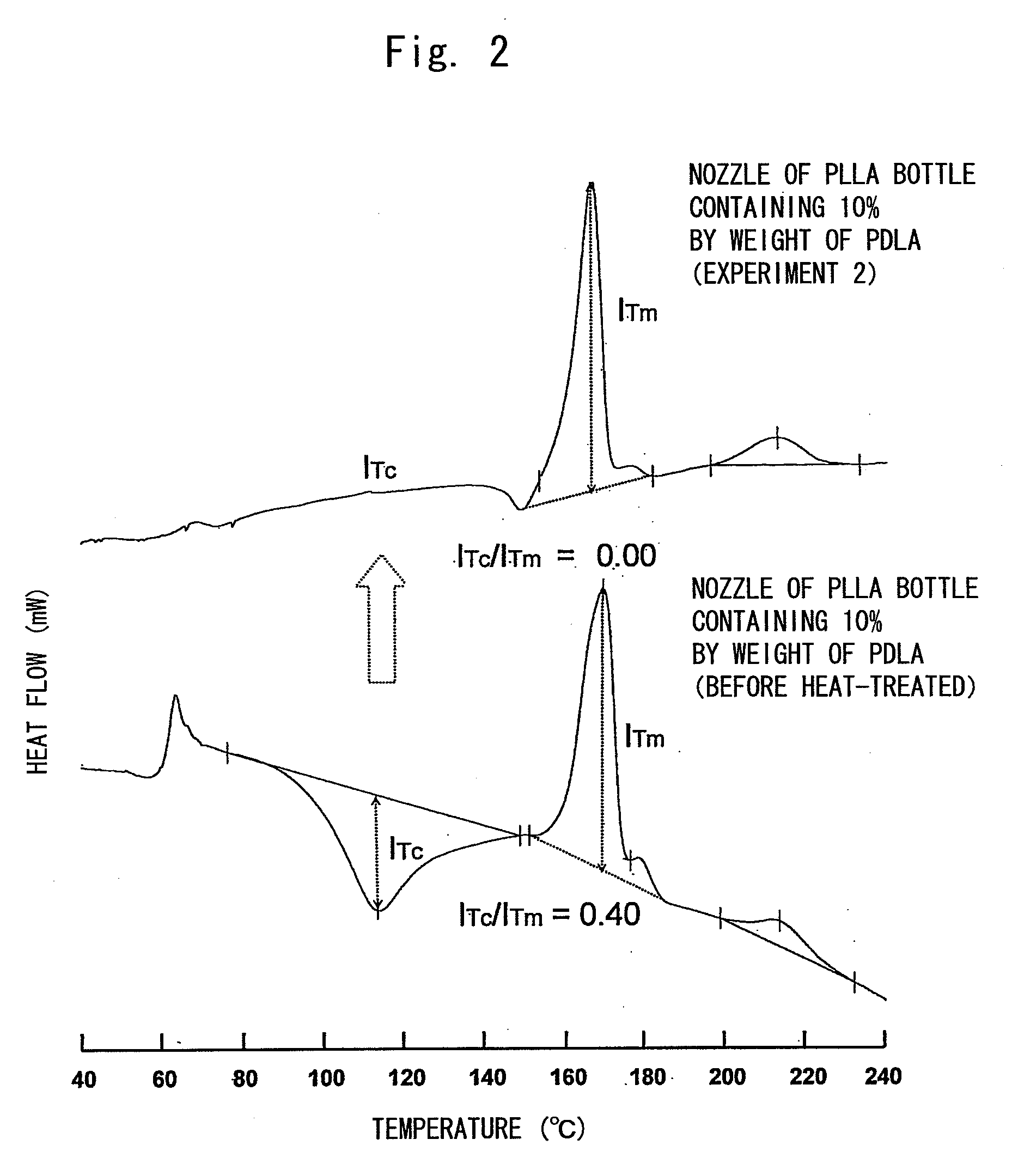Biodegradable stretch mold container having excellent heat resistance
a technology of stretch mold and heat-setting, which is applied in the direction of transportation and packaging, other domestic articles, synthetic resin layered products, etc., can solve the problems of difficult to improve the heat-setting heat resistance of the nozzle, and achieve excellent heat-setting heat resistance, high heat-setting efficiency, and fast heat-crystallization time
- Summary
- Abstract
- Description
- Claims
- Application Information
AI Technical Summary
Benefits of technology
Problems solved by technology
Method used
Image
Examples
examples
[0070]Next, the present invention will be described by way of Experiments. Here, it should be noted that the present invention is in no way limited to the contents of Experiments only.
(Resins)
[0071]A poly-L-lactic acid resin having a weight average molecular weight (Mw) of 200,000 and an optically active isomer (d) ratio of 1.5% (manufactured by Nature Work Co.) and a poly-D-lactic acid resin having an average molecular weight (Mw) of 250,000 and an optically active isomer (d) ratio of 99.0% (manufactured by PURACK Co.) were dry-blended together at ratios shown in Table 1 to obtain resin compositions.
(Forming Bottles)
Preparation of Preforms:
[0072]By using resin compositions shown in Table 1, preforms having a nozzle diameter of 35 mmΦ were prepared by injection-forming by using an injection-forming machine under a temperature condition of 190° C. to 240° C. and a metal mold temperature of 15° C.
Crystallization of Nozzle of Preforms:
[0073]The nozzle only of preforms were selectively ...
experiment 9
(Experiment 9)
[0086]The procedure was conducted in the same manner as in Experiment 2 but without heat-crystallizing the nozzle of the preform. The results were as shown in Table 1.
experiment 10
(Experiment 10)
[0087]The procedure was conducted in the same manner as in Experiment 2 but setting the metal mold temperature to be 50° C. The results were as shown in Table 1.
TABLE 1PLLA / PDLAExp.Exp.Exp.Exp.Exp.Exp.Exp.Exp.Exp.Exp.resin composition12345678910PLLA95908595908510009090PDLA510155101501001010Nozzle crystallizedyesyesyesyesyesyesyesyesnoyesBlow-formingoneoneonetwotwotwotwotwotwotwoone stage / two stagesTemp. of blow metal mold85° C.85° C.85° C.85° C.85° C.85° C.85° C.85° C.85° C.50° C.(° C.)Semicrystallization time2.11.50.62.11.50.616.416.71.51.7(min at 110° C.)Rate of heat shrinkage1.21.72.01.00.90.71.01.01.88.4(%)Heat resistance of bottle∘∘∘∘∘∘x1)x1)x1)x2)1)nozzle deformed2)body deformed
PUM
| Property | Measurement | Unit |
|---|---|---|
| Temperature | aaaaa | aaaaa |
| Fraction | aaaaa | aaaaa |
| Time | aaaaa | aaaaa |
Abstract
Description
Claims
Application Information
 Login to View More
Login to View More - R&D
- Intellectual Property
- Life Sciences
- Materials
- Tech Scout
- Unparalleled Data Quality
- Higher Quality Content
- 60% Fewer Hallucinations
Browse by: Latest US Patents, China's latest patents, Technical Efficacy Thesaurus, Application Domain, Technology Topic, Popular Technical Reports.
© 2025 PatSnap. All rights reserved.Legal|Privacy policy|Modern Slavery Act Transparency Statement|Sitemap|About US| Contact US: help@patsnap.com



